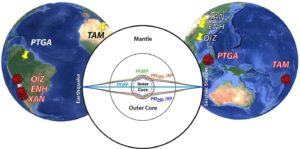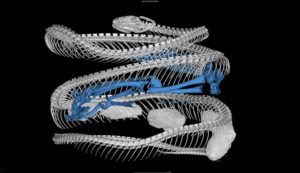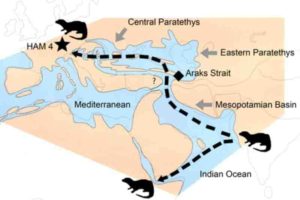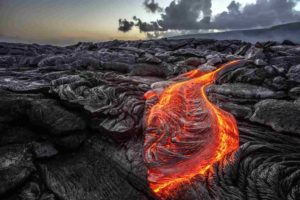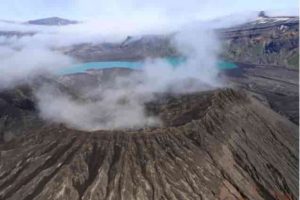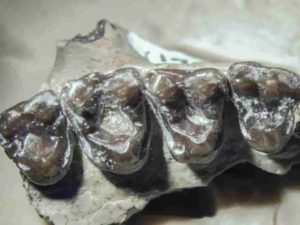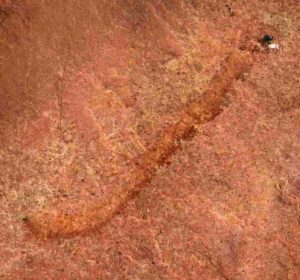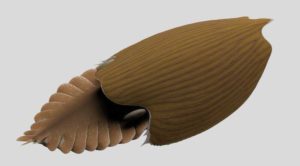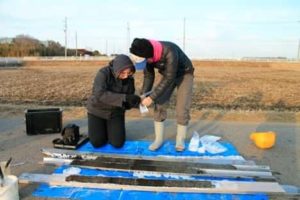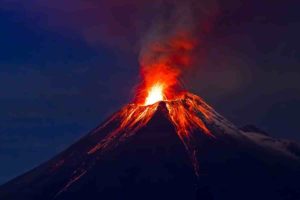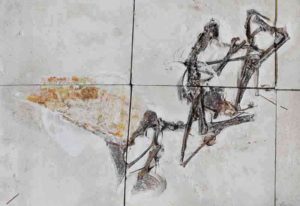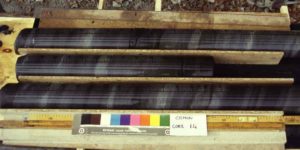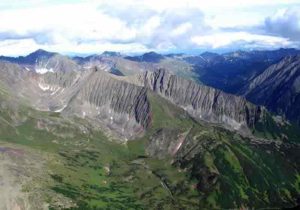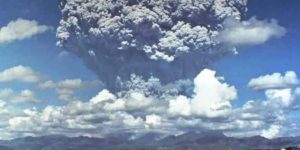
Volcanologists have long been troubled by two questions: When exactly will a volcano erupt next? And how will that eruption unfold? Will the lava flow down the mountain as a viscous paste, or will the volcano explosively drive a cloud of ash kilometres up into the atmosphere?
The first question of “when” can now be answered relatively precisely, explains Olivier Bachmann, Professor of Magmatic Petrology at ETH Zurich. He points to monitoring data from the Canary Island of La Palma, where the Cumbre Vieja volcano recently emitted a lava flow that poured down to the sea. Using seismic data, the experts were able to track the rise of the lava in real time, so to speak, and predict the eruption to within a few days.
Unpredictable forces of nature
The “how,” on the other hand, is still a major headache for volcanologists. Volcanoes on islands such as La Palma or Hawaii are known to be unlikely to produce huge explosions. But this question is much more difficult to answer for the large volcanoes located along subduction zones, such as those found in the Andes, on the US West Coast, in Japan, Indonesia, or in Italy and Greece. This is because all these volcanoes can erupt in many different ways, with no way to predict which will occur.
To better understand how a volcano erupts, in recent years many researchers have focused on what happens in the volcanic conduit. It has been known for some time that the dissolved gases in the magma, which then emerges as lava at the Earth’s surface, are an important factor. If there are large quantities of dissolved gases in the magma, gas bubbles form in response to the decrease in pressure as the magma rises up through the conduit, similar to what happens in a shaken champagne bottle. These gas bubbles, if they cannot escape, then lead to an explosive eruption. In contrast, a magma containing little dissolved gas flows gently out of the conduit and is therefore much less dangerous for the surrounding area.
What happens in the run-up?
Bachmann and his postdoctoral researcher Răzvan-Gabriel Popa have now focused on the magma chamber in a new study they recently published in the journal Nature Geoscience. In an extensive literature study, they analysed data from 245 volcanic eruptions, reconstructing how hot the magma chamber was before the eruption, how many solid crystals there were in the melt and how high the dissolved water content was. This last factor is particularly important, because the dissolved water later forms the infamous gas bubbles during the magma’s ascent, turning the volcano into a champagne bottle that was too quickly uncorked.
The data initially confirmed the existing doctrine: if the magma contains little water, the risk of an explosive eruption is low. The risk is also low if the magma already contains many crystals. This is because these ensure the formation of gas channels in the conduit through which the gas can easily escape, Bachmann explains. In the case of magma with few crystals and a water content of more than 3.5 percent, on the other hand, the risk of an explosive eruption is very high — just as the prevailing doctrine predicts.
What surprised Bachmann and Popa, however, was that the picture changes again with high water content: if there is more than about 5.5 percent water in the magma, the risk of an explosive eruption drops markedly, even though many gas bubbles can certainly form as the lava rises. “So there’s a clearly defined area of risk that we need to focus on,” Bachmann explains.
Gases as a buffer
The two volcanologists explain their new finding by way of two effects, all related to the very high water content that causes gas bubbles to form not only in the conduit, but also down in the magma chamber. First, the many gas bubbles link up early on, at great depth, to form channels in the conduit, making it easier for the gas to escape. The gas can then leak into the atmosphere without any explosive effect. Second, the gas bubbles present in the magma chamber delay the eruption of the volcano and thus reduce the risk of an explosion.
“Before a volcano erupts, hot magma rises from great depths and enters the subvolcanic chamber of the volcano, which is located 6 to 8 kilometres below the surface, and increases the pressure there,” Popa explains. “As soon as the pressure in the magma chamber is high enough to crack the overlying rocks, an eruption occurs.”
If the molten rock in the magma chamber contains gas bubbles, these act as a buffer: they are compressed by the material rising from below, slowing the pressure buildup in the magma chamber. This delay gives the magma more time to absorb heat from below, such that the lava is hotter and thus less viscous when it finally erupts. This makes it easier for the gas in the conduit to escape from the magma without explosive side effects.
Lockdown opportunity
These new findings make it theoretically possible to arrive at better forecasts for when to expect a dangerous explosion. The question is, how can scientists determine in advance the quantity of gas bubble in the magma chamber and the extent to which the magma has already crystallised? “We’re currently discussing with geophysicists which methods could be used to best record these crucial parameters,” Bachmann says. “I think the solution is to combine different metrics — seismic, gravimetric, geoelectric and magnetic data, for example.”
To conclude, Bachmann mentions a side aspect of the new study: “If it weren’t for the coronavirus crisis, we probably wouldn’t have written this paper,” he says with a grin. “When the first lockdown meant we suddenly couldn’t go into the field or the lab, we had to rethink our research activities at short notice. So we took the time we now had on our hands and spent it going through the literature to verify an idea we’d already had based on our own measurement data. We probably wouldn’t have done this time-consuming research under normal circumstances.”
Reference:
Răzvan-Gabriel Popa, Olivier Bachmann, Christian Huber. Explosive or effusive style of volcanic eruption determined by magma storage conditions. Nature Geoscience, 2021; 14 (10): 781 DOI: 10.1038/s41561-021-00827-9
Note: The above post is reprinted from materials provided by ETH Zurich. Original written by Felix Würsten.


